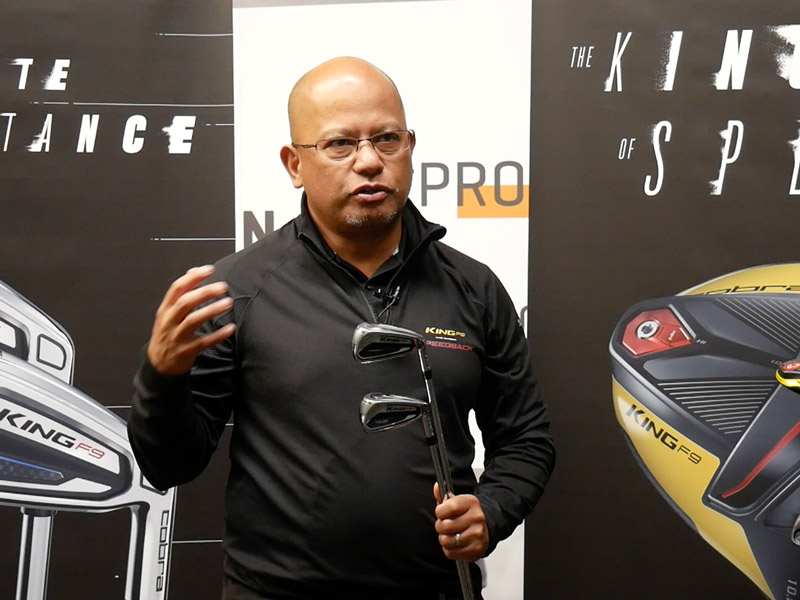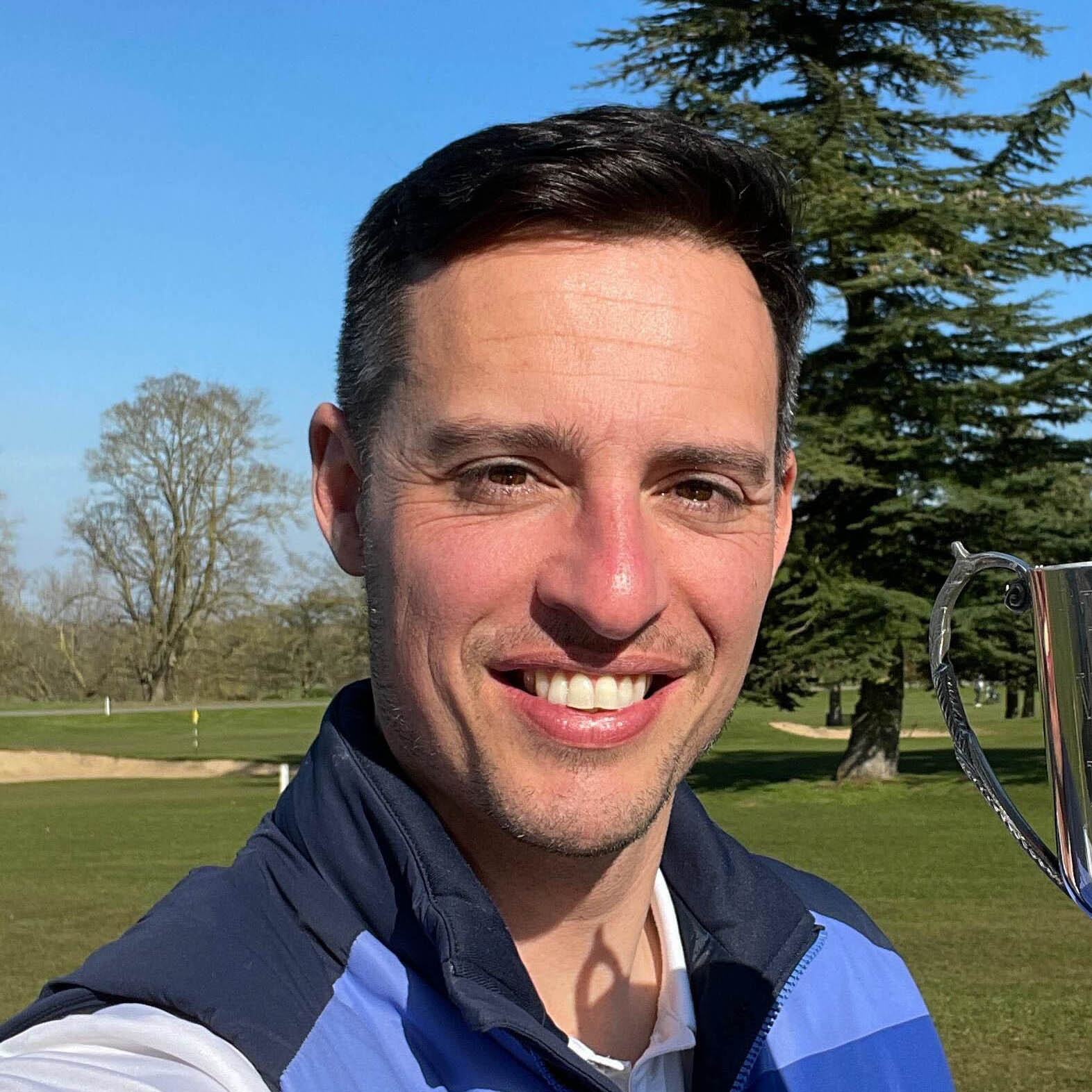Cobra King F9 Speedback Irons Tech Explained
Cobra's Jose Miraflor explains how the technology in the King F9 Speedback irons improves performance


Cobra King F9 Speedback Irons Tech Explained - Cobra's Jose Miraflor explains how the technology in the King F9 Speedback irons improves performance
Cobra King F9 Speedback Irons Tech Explained
For a full summary of the technology found in the Cobra King F9 Speedback woods and irons, click here.
How do the King F9 irons improve over the King F8? Speedback technology allowed us to create a shape in the sole that is slightly wider, that allows us to push the CG back and it features a little bit more toe weighting and heel weighting on the outside as well as tungsten positioned heel and toe on the inside. Up to 33g of tungsten positions the CG low because they are both close to the ground and positions them wide apart so that gives a lot more forgiveness. Now for the first time ever, a distance iron can be super forgiving in its shape.
Where does the distance come from in this case? We get distance because we take the face and use, like a metal wood, a two-piece construction. This face is a forged steel plate that is forged into shape and then welded on, its welded around the top line and all the way on the bottom, welded on the sole which gives you a return factor which means when you hit it the sole will crumple and return.
Not only does it give you speed off the centre of the face, it gives you more launch and as irons today get stronger and stronger, we need to manage trajectory and this helps you get that trajectory back up in the air and help you get those long irons to stop on the green.
How have you managed the sound and feel? When you make irons with really thin faces, it could get really clacky, we use a three-piece medallion - it is a foam layer with polyurethane and VHB tape that holds everything together and also damps vibrations very quickly so even though this is a distance iron, it sounds very soft.
Get the Golf Monthly Newsletter
Subscribe to the Golf Monthly newsletter to stay up to date with all the latest tour news, equipment news, reviews, head-to-heads and buyer’s guides from our team of experienced experts.
How has the One Length set been improved this time around? The One-Length 5-iron is slightly wider in the sole which pushes the CG further back and helps you launch it a lot higher The second thing we have done is change the shafts, there are 3 different shafts we utilise in the one-length - we are using a lighter weight KBS Tour 80 in the longer irons, a KBS 90 in the scoring irons and in the wedges we are using a KBS wedge flex which is in the 100-110g range to stiffen up and heavy those irons to make that trajectory lower.

Joel has worked in the golf industry for over 15 years covering both instruction and more recently equipment. He now oversees all equipment and video content at Golf Monthly, managing a team of talented and passionate writers and presenters in delivering the most thorough and accurate reviews, buying advice, comparisons and deals to help the reader or viewer find exactly what they are looking for.
One of his career highlights came when covering the 2012 Masters he got to play the sacred Augusta National course on the Monday after the tournament concluded, shooting a respectable 86 with just one par and four birdies. To date, his best ever round of golf is a 5-under 67 back in 2011. He currently plays his golf at Burghley Park Golf Club in Stamford, Lincs, with a handicap index of 3.1.
Joel's current What's In The Bag?
Driver: Titleist GT3, 9°, Fujikura Ventus Black 6 S shaft.
Fairway wood: Titleist TSR3, 15°
Hybrid: Titleist TSi2, 18°
Irons: Titleist T150, 4-PW
Wedges: Titleist Vokey SM10, 50°, 54° and 58°
Putter: LAB Golf DF3
Ball: 2025 Titleist Pro V1x
-
 Volvo China Open 2025 Picks, Odds And Predictions
Volvo China Open 2025 Picks, Odds And PredictionsFollowing a break for The Masters, the DP World Tour returns for the final two weeks of its Asian Swing and the Volvo China Open is the penultimate event
By Jonny Leighfield
-
 Rory McIlroy's Sports Psychologist Explains Why He 'Didn't Talk' To Bryson DeChambeau In Masters Final Round
Rory McIlroy's Sports Psychologist Explains Why He 'Didn't Talk' To Bryson DeChambeau In Masters Final RoundDeChambeau raised eyebrows at Augusta National when claiming that McIlroy wouldn't engage in conversation during the final round of The Masters
By Jonny Leighfield